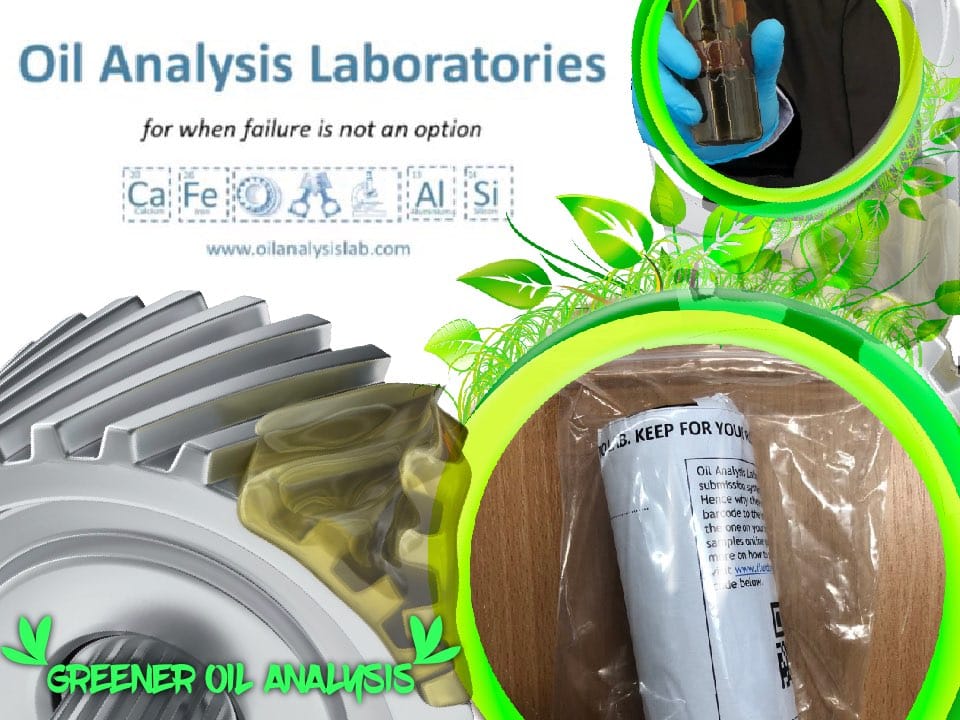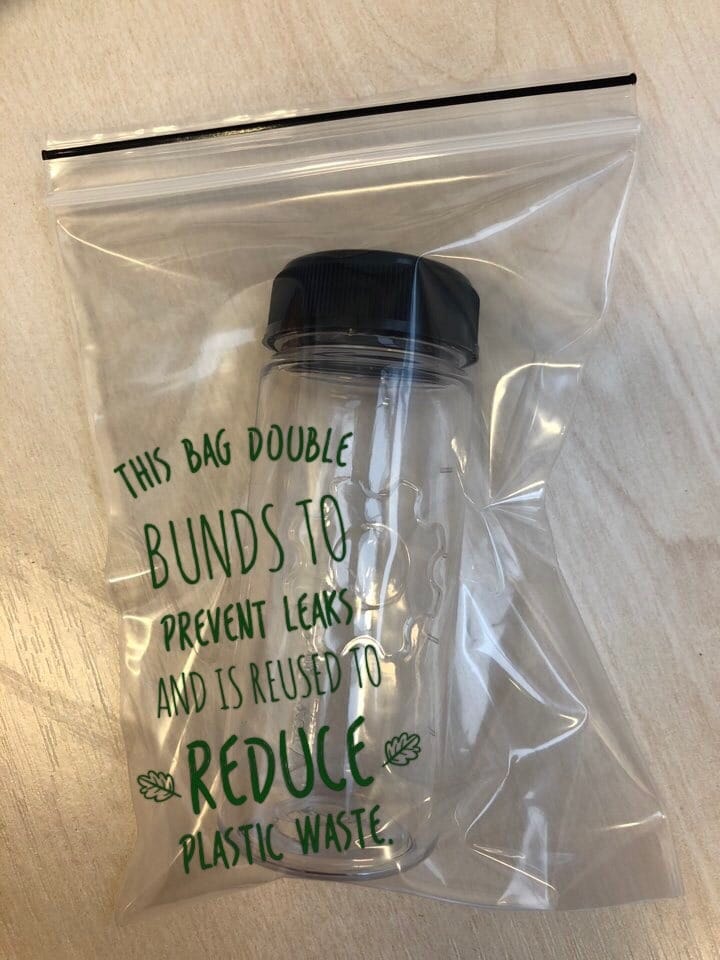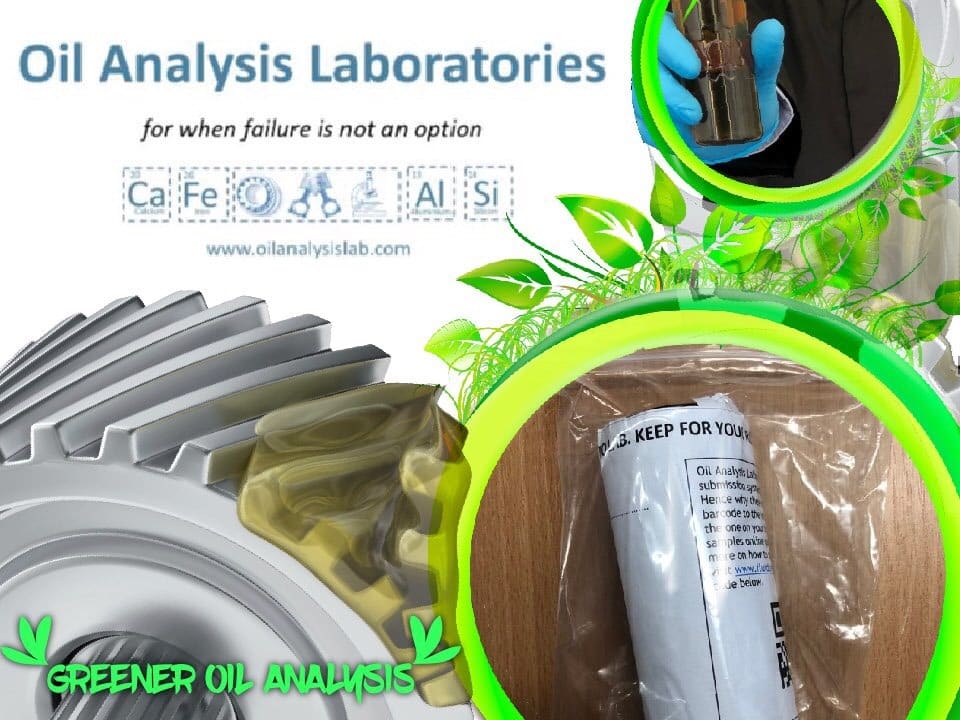
It’s January and we are all trying to make small changes to our lives to improve ourselves and the world around us. But the same can be done for a business too. Being in the oil industry many assume that being green is not a priority and often many businesses in this sector have to go the extra mile to prove their green credentials.
“Oil analysis actually helps the environment”
You may find it surprising to know that oil analysis is actually very good for environnement as it helps:
- Identify equipment that is running inefficiently or polluting the environment so this can be fixed.
- Helps reduce the energy in building and transporting replacement equipment as early failures of equipment are reduced.
- Reduces unecessary oil changes that generate waste.
- Identifies contaminants in products such as fuel, oil and AdBlue that can be damaging to the environment if not corrected and lead to higher energy consumption of up to 12%.
At home we have always tried to be as green as possible in how we live our lives. My wife’s currently doing a vegetarian month to raise awareness for Greenpeace on reducing the environental impact and plastic generated during meat production. If you are interested you can choose (charity event has now ended sorry) to her Greenpeace charity event fund-raiser to raise awareness on plastics wastage.
Having my own lab I have always been a strong advocate of keeping the operations as green as possible. In our laboratory we have already introduced measures such as:
- Motion sensitive lighting so that lights are only on when they need to be.
- Redistilling analytical solvents used during the analysis of your samples so they may gain a second life as solvent washes.
- Very minimal to virtually paper free lab operations, which not only reduces transcription errors and improves the lab accuracy and turnaround, but also saves paper too.
- Replacement of weekly or daily staff and visitor sign in books with electronic versions to reduce paper consumption.
- Removal of A4 and A5 submission forms from sample kits and going to exclusive electronic registration of samples, which improves accuracy, turnaround and reduces paper wastage.
- In my presentations to clients I offer the option of electronic business card downloads to help reduce paper wastage from a business card that for the most part is looked at once before entering into your mobile and then filed in a drawer forevermore.
- During the covid pandemic we wherever possible and safe to do so used reusable PPE; such as washable face masks and face shields. This is a better alternative to disposable single use face masks which according to this news paper article 102 million are thrown away each week in the UK.
“We aim to make our packaging of our sample kits as green as possible.”
The next natural step is the sample kits themselves. We have developed very precise techniques to conserve the sample volume so that there is as little wastage as possible, meaning we are able to perform suites that usually larger bottles would be required by other labs with a smaller sample container. This in terms of our sample kits means we are able to keep the sample bottle size as small as possible to 100ml for the vast majority of our test suites, reducing the demand on plastics. Glass containers for me was never an option because of the safety concerns with breakages.
In many industries double bunding is required for transport purposes of oil samples so in the event a bottle is broken the contents don’t leak out the package. Older jiffy bags and cardboard tubes have long been outdated as packaging options as they do not act as a liquid barrier, and in recent years plastic outer cannisters have been preferred. However these effectively double the amount of plastics used in sampling. We therefore instead chose to use press lock plastic bags for each sample container, which uses far less plastic than the larger containers and still keeps the samples sealed. When within the transportation postal bag there is in fact 3 lays of protection around the sample. However, we aim to make our packaging as green as possible and considering the numbers of samples we receive, putting the single use plastic bags around the containers straight into the recycling still seemed wasteful. Why is it wasteful considering they are recycled? Well around 80% less energy is used to produce recycled bottles than virgin plastics, but that still leaves the 20%, so in addition to recycling this year as our strive to be even greener we decided to start reusing the outer plastic bags for new samples. Clearly reusing the sample bottles is not an option 1) because the amount of solvent required to clean would negate the 20% gained vs normal recycling through approved waste streams. 2) customers need confidence the samples are clean and hence the brand new manufactured bottles achieve this.
This is not an issue with the plastic bags that surround the samples because they don’t come into contact with any oil, and can’t contaminate a sealed sample. We did a pilot with some clients to see if they could tell the difference and not one of them could, from our inspections the only difference was the used bag looked a little more crumpled, but we consider this worth it to help reduce single use plastic waste and save the environment.
Take a look yourself at this sample kit using a reused press seal bag. Can you tell the difference?

Why are we so keen to help reduce single use plastic wastage and inspire others to do so to?
As a planet we waste an awful lot of plastic and even biodegradable plastics can last for a very long time. It is estimated by 2050 all the plastics and microplastics in ocean will weigh more than the all the fish, and it is the responsibility of both business and individuals to resolve this. We hope the example we are setting at oil analysis labs will encourage others to improve their green credentials too.
